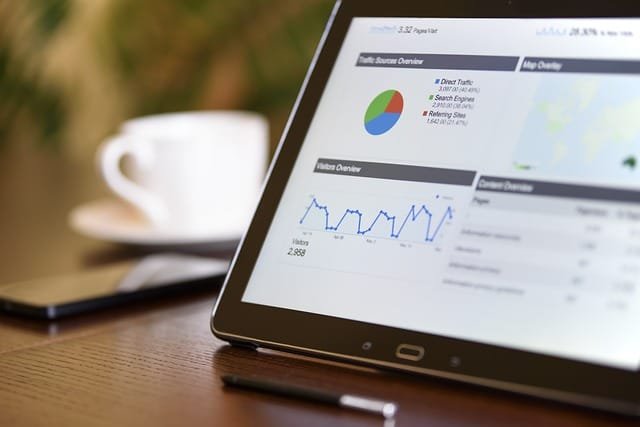In the dynamically evolving world of digital marketing, content remains king. However, creating mesmerizing content is just half the battle. The real challenge, often, is proving its worth in tangible terms. “How effective are our content marketing efforts? Are they driving real value or just consuming resources?” These are questions that marketing professionals grapple with daily. As we navigate through an era where data is abundant, the importance of measuring the ROI of content marketing campaigns has never been more emphasized.
For brands venturing into expansive content landscapes, the intricate process of creation, curation, and distribution is an investment. Every blog post crafted, video produced, or social media update posted incurs a cost. However, it’s the return on this investment that transforms these costs into valuable assets, turning narratives into numbers and stories into statistics.
In this comprehensive guide, we’ll unbox the complex yet rewarding world of measuring content marketing ROI. We’ll take a data-driven journey, examining the tools, metrics, and methodologies that not only quantify but also optimize the value derived from content. From the theoretical frameworks to actionable insights, every paragraph is a stepping stone towards transforming content from a creative endeavor to a measurable, value-driven asset.
Setting Clear Objectives
Understanding the ‘Why’ Behind Your Content
Before we delve into numbers and analytics, understanding the ‘why’ behind every content piece is paramount. Content isn’t created in a vacuum. Every blog, article, or video is birthed from a specific objective. Is it to enhance brand visibility, drive engagement, foster leads, or catalyze conversions? Understanding these objectives is the precursor to measuring ROI effectively.
Aligning Content with Business Goals
The alignment of content with overarching business goals isn’t optional but essential. Every content piece should be a cog in the larger machinery of organizational objectives. Here, the key performance indicators (KPIs) become the bridge, connecting content efforts with business outcomes.
Data Collection & Analysis
Embracing Analytics Tools
In the world where data is the compass, analytics tools are the navigators. Google Analytics, SEMrush, and HubSpot aren’t just tools but allies in the intricate journey of measuring content ROI. They unbox insights, from user engagement, bounce rates, to conversion metrics, painting a comprehensive picture of content performance.
Quantitative and Qualitative Data
Numbers tell a story, but not in isolation. The amalgamation of quantitative and qualitative data enriches the narrative. While quantitative data echoes the numbers, qualitative data unveils the experiences, perceptions, and interactions that numbers alone can’t articulate.
Metrics that Matter
Traffic and Engagement
Traffic is the lifeblood of online content. It’s an initial indicator of content’s reach and visibility. However, traffic is not just about volume but quality. Analyzing the demographics, behavior, and engagement levels of the audience provides insights into the relevance and resonance of the content.
Conversion Metrics
Beyond engagement, the ultimate testament of content’s effectiveness is conversions. This transcends beyond the simplistic view of sales to include actions that align with business objectives. Conversion rate optimization (CRO) becomes pivotal, integrating A/B testing, user feedback, and analytics to enhance the content’s conversion potential.
A Deep Dive into Analytics
Google Analytics
Google Analytics isn’t just a tool; it’s a goldmine of insights. From real-time data, audience insights to behavior and conversion analytics, it’s integral in ROI measurement. Custom reports, goals, and segments enable tailored insights, aligning analytics with specific content objectives.
SEMrush Content Analytics
SEMrush steps in to offer competitive content analysis, SEO optimization insights, and content distribution metrics. It transforms content from a creative piece to a strategic asset, integrating SEO, competitive intelligence, and audience engagement into a holistic view of content performance.
Data-Driven Decisions
Interpreting Data
The influx of data can be overwhelming. The skill isn’t just in collection but interpretation. Data should inform decisions, providing actionable insights that enhance content strategy, structure, and distribution. Every data point is a clue, unraveling the mysteries behind content performance and audience preference.
Optimizing Content Strategy
Data isn’t static; it’s dynamic. As such, content strategies should be fluid, evolving with emerging data insights. A/B testing, SEO optimization, and audience feedback become continuous processes, each data insight a stepping stone towards refined, optimized, and targeted content.
The Role of AI and Machine Learning
Predictive Analytics
AI and machine learning have ushered in a new era of predictive analytics, offering foresight into content performance. Predictive analytics employs historical data to forecast future outcomes, transforming content marketing from a reactive to a proactive strategy.
Personalization at Scale
AI-driven personalization has been a game changer. It allows marketers to deliver personalized content experiences at scale, enhancing engagement and conversions. Machine learning algorithms analyze user behavior and preferences to curate content that resonates with individual users, leading to increased relevance and engagement.
Social Media Integration
Tracking Social Shares and Engagement
Social media isn’t just a distribution channel but a treasure trove of insights. Tracking social shares, likes, comments, and engagement levels unveils the social resonance of content. It’s a direct indicator of content’s shareability and its potential to go viral, influencing both reach and engagement.
The Impact of User-Generated Content
User-generated content (UGC) on social platforms can be a goldmine for SEO and content marketing. It provides raw, unfiltered insights into audience preferences, feedback, and sentiments. Harnessing UGC can augment content authenticity, engagement, and SEO, weaving the voice of the customer into the brand’s content narrative.
Content Refresh and Optimization
The Art of Refreshing Content
Digital content isn’t set in stone; it’s malleable. The most successful content marketers understand the art of content refresh, optimizing content to align with emerging trends, SEO dynamics, and audience preferences. It involves updating, optimizing, and enhancing content to boost its relevance, engagement, and performance.
SEO Dynamics
SEO isn’t static; it’s dynamic, influenced by algorithm updates, competitive dynamics, and user behavior. A content piece that ranks today might be obsolete tomorrow. The agility to adapt content to the ever-evolving SEO landscape, optimizing keywords, structure, and quality, is integral in sustaining content performance.
Content Distribution and Promotion
Leveraging Multi-Channel Distribution
In the age of digital proliferation, multi-channel distribution has become pivotal. It’s not just about creating great content but ensuring it reaches the right audience at the right time. Leveraging social media, email, SEO, and paid media ensures content penetrates diverse audience segments, maximizing reach and engagement.
Influencer Collaborations
Influencer collaborations have emerged as a potent tool in content promotion. It combines the credibility and reach of influencers with the brand’s content, amplifying reach, engagement, and conversions. Choosing the right influencers, aligning with the brand’s niche and audience, is crucial in maximizing the impact of influencer collaborations.
The Future of Content ROI Measurement
Emerging Technologies
Virtual reality (VR), augmented reality (AR), and blockchain are not just buzzwords but emerging realities in content marketing. They’re set to redefine content creation, distribution, and measurement. For instance, blockchain could enhance content authenticity while VR and AR could offer immersive content experiences, influencing engagement and conversion metrics.
Data Privacy and Ethics
In the data-driven age, privacy and ethics have taken center stage. With regulations like GDPR and CCPA, content marketers must balance data-driven insights with privacy compliance. Ethical data practices will not just be a legal requirement but a competitive advantage, influencing audience trust and brand reputation.

Related: Check out our free SEO suite

AI-Powered Analytics
Real-time Data Analysis
In the contemporary, fast-paced digital environment, real-time data analysis is essential. AI-powered analytics tools are offering businesses the ability to analyze user interactions and engagement with content instantaneously. This facilitates real-time adjustments, enhancing the adaptiveness and responsiveness of content marketing strategies.
Behavioral Insights
AI’s capacity to analyze and interpret user behavior offers unprecedented insights. It can decipher patterns, trends, and anomalies in user engagement. This is pivotal for crafting personalized content experiences, where recommendations and content variations are tailored to individual user behaviors and preferences.
Content Automation
Automated Content Creation
While human creativity is irreplaceable, AI and machine learning are making strides in automated content creation. Natural language processing and generation algorithms are enabling the automated creation of standard content pieces, reports, and updates, augmenting human creativity and efficiency.
Dynamic Content Optimization
AI isn’t just influencing content creation but its optimization. Dynamic content optimization tools leverage machine learning to automatically adjust content elements like headlines, images, and calls to action in real-time, enhancing engagement and conversion rates dynamically.
The Integration of Voice Search
Optimizing for Voice
Voice search is transforming the SEO landscape. With the proliferation of voice assistants, optimizing content for voice search is paramount. It involves focusing on conversational keywords, local SEO, and structured data to align with the specific nuances of voice queries.
The Role of Conversational AI
Conversational AI, including chatbots and voice assistants, are integrating into content marketing. They offer personalized interactions, instant responses, and engagement tracking. For marketers, conversational AI provides insights into user queries, preferences, and feedback, shaping content strategy and personalization.
Emerging Content Formats
Interactive Content
The interactive content is elevating user engagement. Formats like quizzes, polls, and interactive videos offer users a two-way interaction, enhancing engagement, and providing marketers with direct insights into user preferences and behaviors.
Virtual and Augmented Reality
Virtual and augmented reality are moving from the fringes to the mainstream. For content marketers, VR and AR offer immersive content experiences, from virtual trials to interactive 3D content, enhancing engagement, retention, and conversion metrics.
The Evolution of SEO
Algorithm Intelligence
Search engines are becoming increasingly intelligent. SEO isn’t just about keywords but user experience, relevance, and quality. The evolution of algorithms is focusing on understanding user intent, content quality, and engagement, making SEO a holistic practice that integrates content quality, user experience, and technical SEO.
SERP Features
The Search Engine Results Pages (SERPs) are evolving. Features like snippets, local packs, and knowledge graphs are transforming SEO. Content marketers must optimize for these features to enhance visibility, requiring an integrated approach that combines SEO, content quality, and structured data.
Concluding Remarks
Content marketing is traversing an evolutionary path, influenced by technology, user behavior, and SEO dynamics. For businesses and marketers, agility, adaptiveness, and a focus on quality and user experience are pivotal. As technology like AI, machine learning, and emerging content formats redefine the landscape, the integration of quality, relevance, and innovation will shape the content marketing narratives of the future.
This multi-dimensional approach, focusing on quality, technology integration, and user experience, will be pivotal in driving content marketing ROI, aligning with business objectives and the evolving digital marketing ecosystem
READ NEXT:
- The Evolution of Digital Marketing: From Billboards to Bots
- How to Magnetize Investment Buffs to Your Site with Proven SEO Tactics
- Digital Marketing for Local Businesses: Engaging Your Community Effectively
- Keywords to Power Your Green Energy SEO Strategy
- How to Use User Behavior Metrics for SEO Improvement






















Comments are closed.